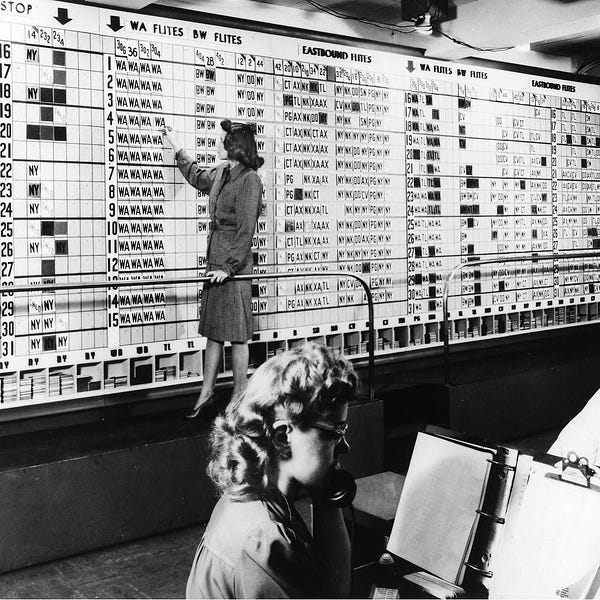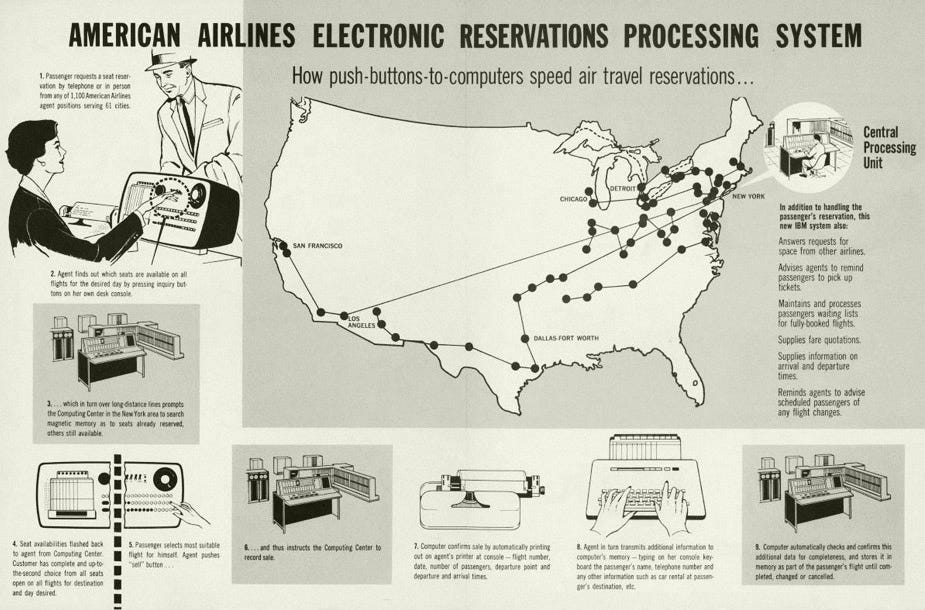How to Start a Fintech: Early Airline Reservation Systems | Supplemental 2
Airlines of the 1940s through 1960s faced a scale issue when it came to booking a passenger.
See if you can spot the issue from a paper on airline reservation systems (emphasis is my own):
[T]he manual systems in use at the time maintained seat inventories for a given flight at its point of departure. Reservations agents were free to book space on a flight after confirming seat availability posted on large display boards in each reservations office. After selling a seat, an agent sent a one-way booking message via telephone or teletype to the reservations office in the flight’s originating city. Upon receipt of the booking message, a clerk decreased the count of available seats for the flight from an inventory maintained in a looseleaf folder. When the number of available seats for a flight dropped below a specified level, a "stop sale" message was sent to all reservations offices for posting on the availability boards.
Maybe this visual will help:
When you're only operating in say 2 or 3 cities that all connect, this is a passable solution. Where it breaks is at scales because the number of routes grows at a rate of N(N-1) so N=3 is 6 routes, but N=10 is 90 routes. For reference, American Airlines was flying to more than 60 cities, which means they would have needed 3,540 direct flights to connect all the cities — this is why most airlines opt for a hub and spoke model to simplify things.
To solve this problem American Airlines partnered with IBM to introduce an innovative solution: Semi-Automatic Business Environment Research (SABER). SABER was built on two IBM mainframe computers and the lessons learned from a DoD project on real-time information processing. I’ve linked to a paper on the technical details, but here’s a summary of the results:
American could economically check availability, update inventory, and record a passenger name record (PNR) automatically. American’s reservation error rate dropped to under 1%, and a reservation could be processed in seconds. The new system could process 7500 reservations per hour. The average time to process a reservation in the manual [punch] card system was 90 min, which was now done in a few seconds.
With this technologic win in hand, American hoped to stay competitively priced, better utilized, and solvent as United, PanAm, and TWA ate more and more marketshare from the early leader. Looking at this video, it seems like they did well in the only of these three that truly matters: Solvency.
Extra Bit:
Sabre, along with Amadeus and Travelport, dominate the Global Demand System (GDS) market which underpins much of modern air travel. To learn more about this — and what could happen if things go wrong — check out this Wendover video:







